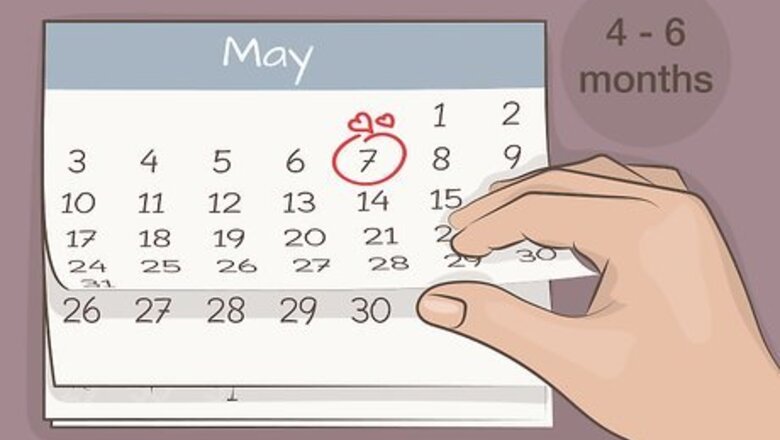
views
Brainstorming Your Design
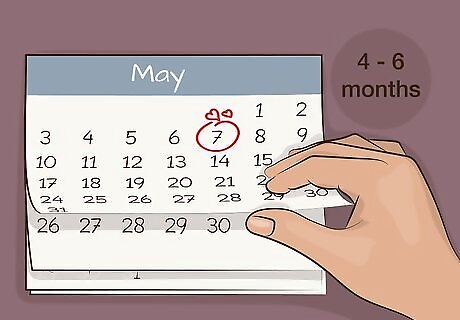
Start planning 4-6 months before you want your ring. It will usually take 1-6 weeks for a custom ring to be made. It can also take quite a while to figure out what you want your ring to look like. In addition, it can take a few weeks to find a reputable jeweler to work with. All things considered, start the planning process at least 4-6 months in advance to ensure that your ring is ready when you need it. If there you aren’t giving the ring away to someone for a gift, proposal, or wedding, you can start designing your ring whenever you’d like.
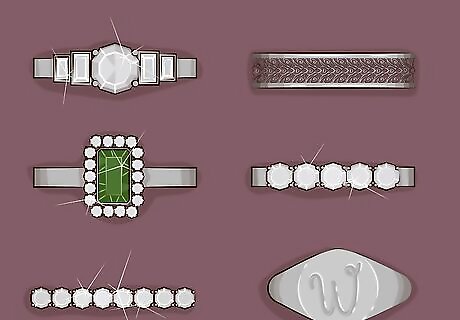
Choose a style of ring as a starting point for your design. While it isn’t mandatory, it often helps to choose a basic style of ring as a starting point for your design. This will help you guide your design decisions and determine the overall style and look of your ring. Art Deco rings have lots of angles and shapes in the design, and are a popular modern-looking choice. Vintage and filigree styles are unique and tend to have a lot unique inlays and curves. Choose a style as a starting point based on what you think looks good. Other popular styles of ring include anniversary bands, cocktail rings, eternity bands, and signet rings. Engagement rings and wedding bands typically have a specific style and look. Make sure that your partner will appreciate a unique ring before deviating from the traditional style.
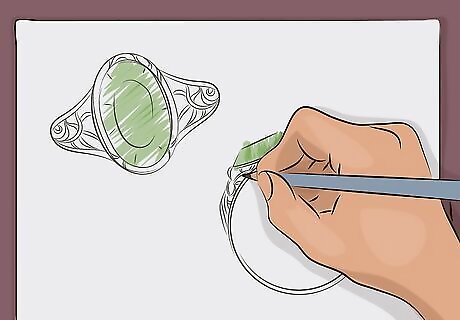
Create some sketches based on what you have in mind. Make a list of each specific element that you choose as you’re creating your ring. As you choose each element, create a drawing of what you want your ring to look like. Compose multiple sketches from a variety of angles to help the jeweler you work with visualize your design.Variation: If you aren’t big on drawing, find images of rings online and print them out. Bring the images to the jeweler that you ultimately end up working with to make it easy for them to picture what you’re looking for.
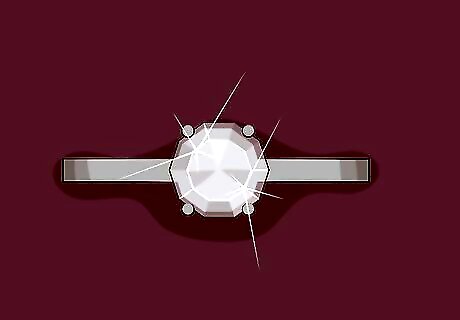
Keep your ring simple if you want a classic, formal look. A straightforward custom ring with a unique band and stone is an excellent way to show someone that you care about them. Just because you’re designing a ring from scratch doesn’t mean that you have to go overboard! Stick with a simple, round band with a high-quality metal and go for a classic stone with a standard shape for a simple look.Tip: Most engagement and wedding rings are pretty simple. That doesn’t mean you have to design a simple ring, but you shouldn’t be worried if your design feels kind of ordinary.
Choosing Your Stones
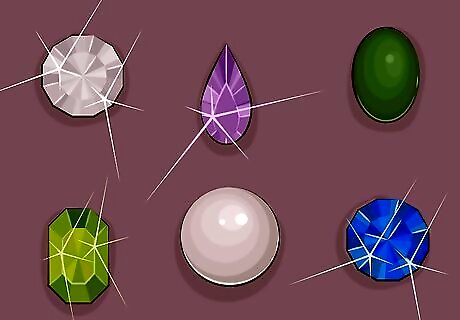
Select the type of stones you want in your ring. The key element of most rings are the gemstones. There can be 1 stone, or many—although most rings utilize 1 stone. Select your gemstone based on the color, shine, and quality of the stone. Diamonds are considered the most desirable, but amethyst, jade, sapphire, pearl, and peridot are just a few of the colorful options available to you.Tip: Think about the goal of your ring. If it’s for personal use, pick a stone that you personally identify with. A casual gift to a coworker likely merits a cheaper stone, while an engagement ring should probably have a beautiful diamond on it. If your budget is limited, cubic zirconium is a great alternative to diamond. It’s not nearly as expensive; you can get a cubic zirconium for $20-100, while diamonds typically cost thousands of dollars. If you aren’t sure what type of stone you want, go to a jewelry store and look around. Ask the clerk about what kind of stones they have to get an in-person look at different stones. You don’t have to include stones in your ring. You can simply design a unique band if you want.
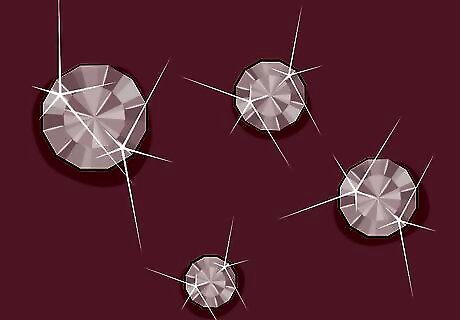
Choose a stone size based on your budget and design needs. Generally speaking, the bigger the stone is, the more expensive it will be. However, the quality of the stone will play into this price, so balance these 2 considerations based on your personal preferences. If the stone is too big, people may think it’s gaudy and over the top. If the stone is too small, people won’t notice it. A quality stone will cost more, while a cloudier or imperfect gem will save you a bunch of money. Pick a gemstone based on how it looks overall, not on how "high-quality" it is. One gem might be perfect quality but be very small in size, while a larger, imperfect diamond may look more beautiful on your hand. Most gemstones are measured in carats or millimeters. Millimeters refer to the physical size, while carats refer to the mass of the stone. A carat is equivalent to 200 milligrams (0.0071 oz). The average carat size for a main stone is 1 carat, while engagement rings tend to measure in closer to 2 carats.
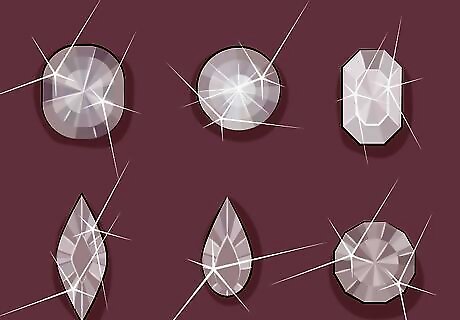
Select a cut for your stone to determine the shape. Shapes for stones include cushion, round, emerald, marquise, oval, and others. Consider how much symmetry you want in your stone and choose your stone based on the statement you want to make. A perfectly round stone is classic and elegant, while trillion and pear stones will stand out as unique. The cut will influence the price of your stone. Popular cuts, like round and marquise cuts, fetch a higher price than less popular options.
Picking Your Band and Setting
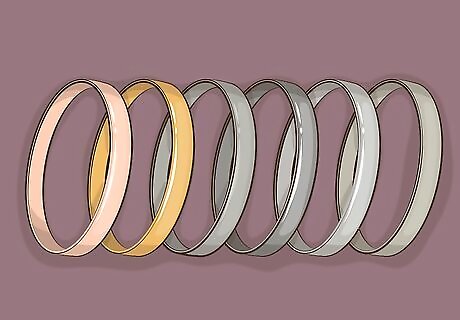
Pick the type of metal you want to use for your band. The band adds an element of color to a ring, but it also experiences a lot of wear and tear as it rubs against your skin and is taken on and off over the years. Rose gold, gold, silver, titanium, tungsten, and platinum are the most popular choices, but you can use any material available to your jeweler. Keep in mind, if you’re going with gold, choose a lower carat to minimize the ring’s susceptibility to scratches and damage. Platinum is a solid white color. It's the most popular choice for engagement and wedding rings, and is also an extremely durable metal for a ring. Most stones require a durable metal for the band, but you can use any material you want if you’re not including any stones. You can even make a ring out of wood, iron, or meteorite!
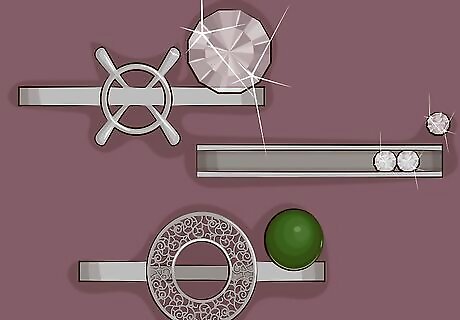
Select the head type and setting that will hold your stones. Head types are the prongs that hold key stones over the band. The setting refers to how the head type and stone are attached to the ring. Choose a head type based on how durable and showy you want the ring to look. Generally, the number, size, and shape of the prongs determine how stable the ring is. However, bulkier prongs and head types tend to be less luxurious and desirable. Settings come in a variety of different styles. Channel settings line the interior of the ring with metal to reinforce the ring. Filigree settings add a variety of worn stones or metals to the band to make it look vintage. There are other options based on how shiny, reflective, or unique you want the band to look. The most common head type for engagement rings is a basket head, where 4-6 prongs hold the stone in place by its edges. You don’t have to include a setting. You can leave the metal exposed if you’d like.
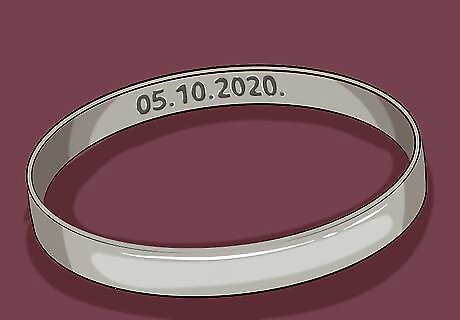
Add an engraving for a bit of a personal touch. An engraved message, date, or name is a great way to give a custom ring a new dimension. You can engrave the exterior side or interior side of the ring, although interior engravings are more common—especially if it’s an intimate message. Consider adding an anniversary date or simple message of affection if the ring is for someone special. If you’re going with a plain metal ring with no stones on it, consider engraving the exterior side of the ring with something personal if you’re designing a ring as a gift.
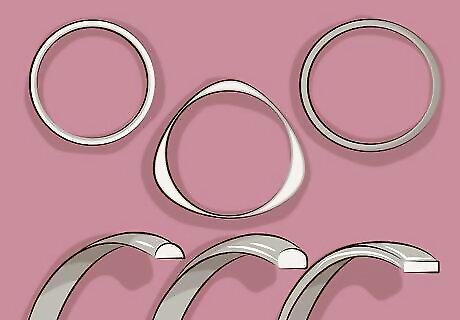
Pick the shank type and fit to determine the shape of the band. Shank type refers to the overall shape of the ring. A circular ring is the standard shake setting, although you can choose an oval or triangular ring. You can also pick a shank type that is thicker in some areas and thinner than others. Shank fit refers to the shape of the ring as it rests around your finger. Rings don’t need to be perfectly round and basic. You can get an asymmetrical setting or shape it like a snake that crawls up your finger. You can even get a ring with sharp angles in it. Choose a unique shape if you want the ring to stand out and look contemporary. Most rings have a standard fit where the part that touches your skin is flat but the exterior side is round. Other options include straight fits and custom fits, which bend and warp around your finger.
Bringing Your Ring to Life
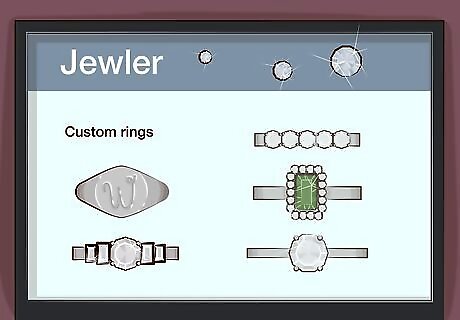
Find a reputable jeweler that creates custom rings. Look online to find custom jewelers in your area. Most larger jewelry stores will offer customization options, but not every jeweler can create a custom ring from scratch depending on what you’re looking for. Look at reviews, call stores to ask questions, and consider the jeweler’s reputation in your area. If your city has a jeweler’s row or shopping district, there’s nothing wrong with walking into multiple shops and asking what kind of services they offer. Stores that have been around a long time in high-volume areas tend to be reasonably reputable.
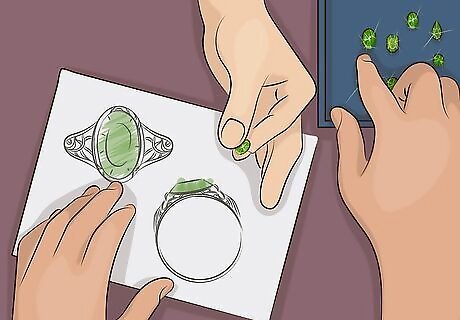
Visit the store and communicate your design to the clerk. Once you choose a store to make your ring, sit down with a clerk and explain what you’re trying to create. They will offer guidance regarding how your design choices will influence the cost and durability of the ring. They will also share examples of rings they have in their inventory to make sure they understand what you’re looking for in certain elements of the design. If you find a stone at a store that you really like but don’t like what the clerk is offering in terms of design options, you can buy a gem at one store and take it to another store to build the ring.
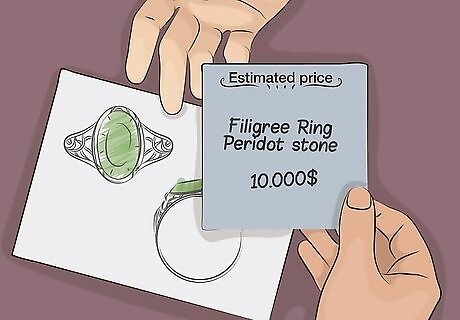
Get an estimated price and compare it to other stores in your area. Once you and the clerk are on the same page regarding the design, they will be able to provide a general estimate for the ring. Depending on your design choices and the difficulty of creating the ring, the cost can range from $1,000-40,000. If you aren’t sure about the price, tell the clerk that you will come back and visit a few other stores to compare prices.Tip: The more elements that you add, the more expensive the ring will be. If you go with a unique band made out of platinum with a 4 carat diamond and bevel gems, you can easily expect to spend at least $30,000 on the ring.
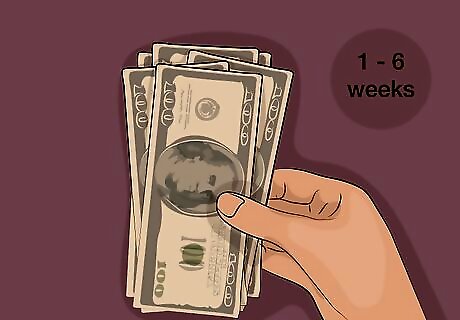
Pay for your ring and wait 1-6 weeks to pick it up. Once you find a store where you’re happy with the price, pay for the ring to be made. Some stores may offer a payment plan, but you may have to pay up front. Once the payment has been made, wait a few weeks for the ring to be made and pick up your new piece of custom jewelry!

















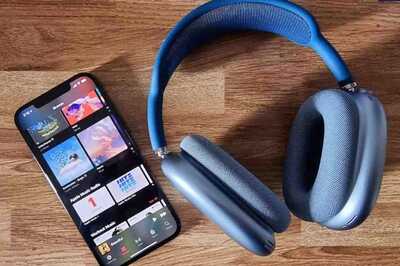
Comments
0 comment